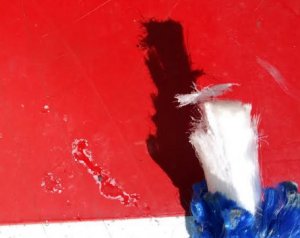Serpant
Member
With the sail run out to the run position the stopper knot on the main sheet prevents releasing the sail further to slow the boat prior to running on to beach.Furthermore I have encountered a nasty gybe hitting the fully retracted centerboard and my not so graceful landing backwards in the shallow water. Anybody else had this restricted sheet travel or is my sheet length not standard




 As stated, I drop the main, toss the board into the cubby, but should add that I grab the paddle—which, while sailing, is stored alongside the mast.
As stated, I drop the main, toss the board into the cubby, but should add that I grab the paddle—which, while sailing, is stored alongside the mast. 
